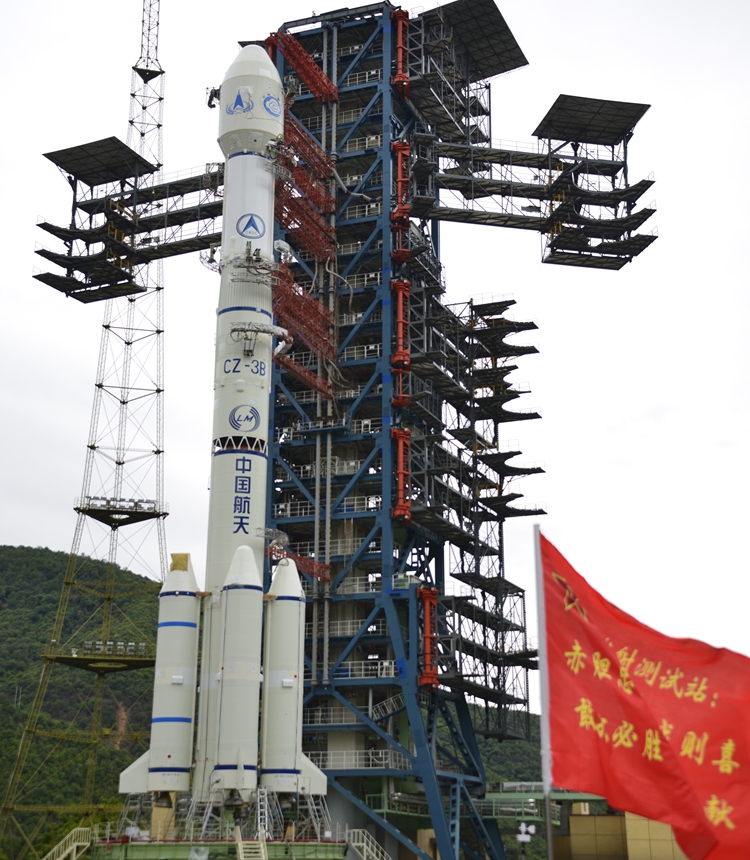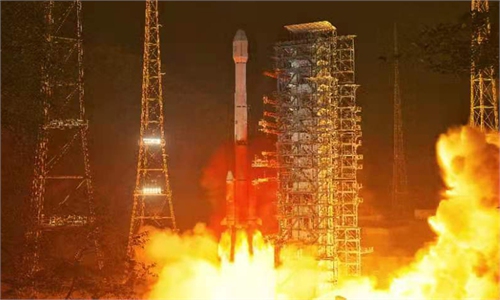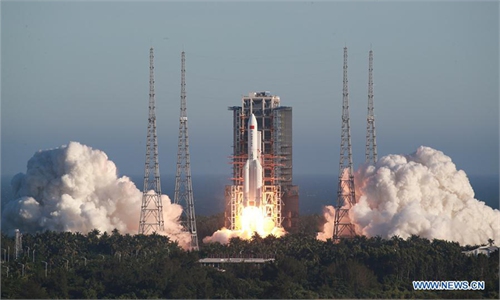SCI-TECH / AIR & SPACE
China successfully tests parachutes for safe rocket debris landing

Photo: CALT
China successfully tested a 300-square-meter high-tech parachute system during a recent flight of its Long March-3B carrier rocket, marking a technology breakthrough that will enable more precise control of rocket debris after launch and make space launches safer, Global Times learned from the system developers on Monday.Marking a first in the country's aerospace history, the China Academy of Launch Vehicle Technology (CALT), China's largest organization for the research, development and production of missiles and carrier rockets, deployed the parachute system during the launch of the Fengyun-4B meteorological satellite via a Long March-3B rocket on Thursday.
Encased atop one of the four boosters of the Long March-3B, the high-tech parachute system was activated after the booster separated from the rocket and fell back to a preset altitude. Two parachutes then opened in sequence to control its altitude and direction, and with the help of continuous positioning using satellite navigation, the booster performed a precise and controlled landing, the academy told the Global Times on Monday.
Hu Wei, deputy designer-in-chief of the Long March 3A rocket series, said that the Thursday trial also set a world record for recovery of the heaviest rocket debris using such a parachute system.
Data from the fall trajectory has also been gathered, which will provide a vital reference for future application of such technology and efforts to make landing of rocket debris safer, the CALT official noted.
CALT has been researching and developing grid fins and parachutes, aiming to narrow the range of the debris area by 85 percent.
Deployment of the 300-square-meter parachute system would also bring them closer to the goal by narrowing the landing area range by 70 percent, according to CALT.
By adopting this parachute technology, the inland landing site for rocket debris will be safer, CALT said.
CALT did not disclose the exact location for the landing site, while noting that it was within the predetermined area, which indicated that the system trial was fully successful.
China first tested grid fin control technology on a Long March-2C carrier rocket on July 26, 2019. The first stage of the rocket was controlled to fall in a predetermined area.



